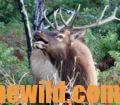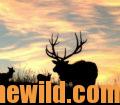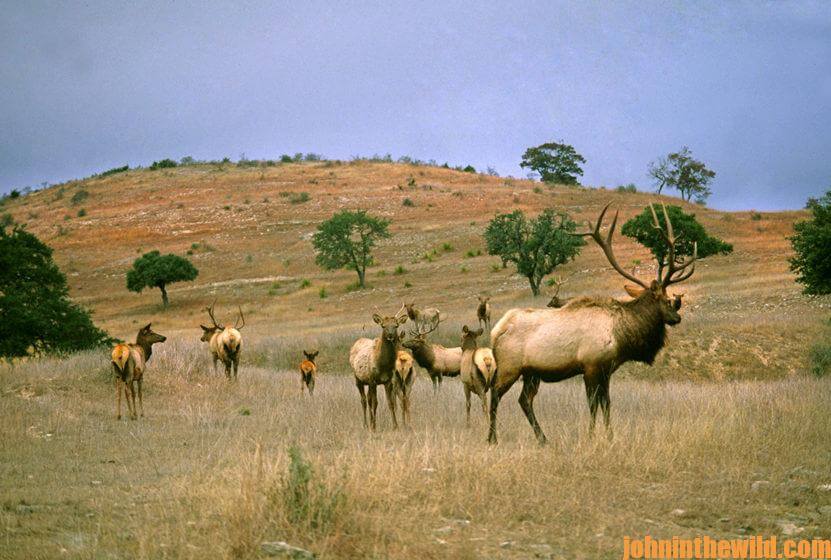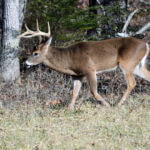Editor’s Note: Dieter Kaboth of Idaho, an avid elk hunter and former regional director for the Rocky Mountain Elk Foundation (https://www.rmef.org/), is a four-time World Champion elk bugler.
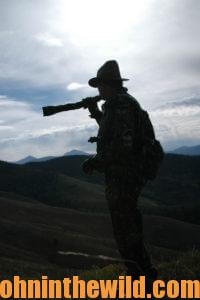 If I go out in the early-morning hours, bugle to a bull, get an answer, and then bugle again, and the next time that bull bugles he’s moving away from me, nine out of 10 times that bull has cows with him and prefers to be a lover rather than a fighter. So, he’ll lead those cows away from what he believes to be another bull. He doesn’t want to get into a fight and possibly lose those lady friends he’s worked so hard to attract and collect.
If I go out in the early-morning hours, bugle to a bull, get an answer, and then bugle again, and the next time that bull bugles he’s moving away from me, nine out of 10 times that bull has cows with him and prefers to be a lover rather than a fighter. So, he’ll lead those cows away from what he believes to be another bull. He doesn’t want to get into a fight and possibly lose those lady friends he’s worked so hard to attract and collect.
Another reason you’ll run off the bull you’re trying to take is because most elk hunters follow the same pattern as every other elk hunter. They’ll drive down the roads, bugle and wait to hear elk bugle back. They assume they can cover more territory and have a better chance of finding bulls using this tactic. But remember, more than likely, the elk already has had hunter encounters. So, when he hears a bugle coming from a main road, he’ll move to another location.
 The bull you’re calling to may have just gotten into a fight and whether he’s won or lost, he’s still has injuries and doesn’t want to aggravate them by getting into another fight. Most commonly, if a bull bugles as he’s moving away from you, he’s probably got cows he doesn’t want to share with you. One of the ways you can get into that bull’s mind is to do what he does. Make the bull think you’re intimidated by his bugling, and start walking away from him. I’ll often run 200-300 yards away from a bull that’s bugling to make that bull think I’m another bull elk and believe he’s a bigger, badder bull than me to make him think I don’t want to fight him.
The bull you’re calling to may have just gotten into a fight and whether he’s won or lost, he’s still has injuries and doesn’t want to aggravate them by getting into another fight. Most commonly, if a bull bugles as he’s moving away from you, he’s probably got cows he doesn’t want to share with you. One of the ways you can get into that bull’s mind is to do what he does. Make the bull think you’re intimidated by his bugling, and start walking away from him. I’ll often run 200-300 yards away from a bull that’s bugling to make that bull think I’m another bull elk and believe he’s a bigger, badder bull than me to make him think I don’t want to fight him.
If I move away from the bull and start bugling, I’ll send my hunter to the bull and attempt to keep the bull bugling by staying away from him and moving back and forth, while my hunter slips-in close enough to get a shot. As my hunter moves-in to get closer to the bull, I’ll ask the hunter to begin to cow-call. I want to create an illusion in that bull’s mind that he’s run off another bull, but that bull has left one of his cows behind, and now she’s calling to him.
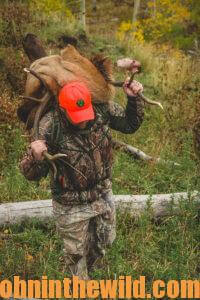 Many times as the bull comes-in, he’ll circle downwind, and the hunter may have to back-up to get a shot. By using the walk-away tactic, the bull knows: you’re not a hunter because hunters bugle and move-in; you’re not a bigger, stronger bull; you don’t want to fight because you’re moving away from him; and you may have a cow or a small harem of cows, and for some reason, the cow you’ve left behind wants to now become part of his harem, if he’ll just come and round her up. This tactic is very productive on public lands, because it’s a strategy very few, if any, other hunters use.
Many times as the bull comes-in, he’ll circle downwind, and the hunter may have to back-up to get a shot. By using the walk-away tactic, the bull knows: you’re not a hunter because hunters bugle and move-in; you’re not a bigger, stronger bull; you don’t want to fight because you’re moving away from him; and you may have a cow or a small harem of cows, and for some reason, the cow you’ve left behind wants to now become part of his harem, if he’ll just come and round her up. This tactic is very productive on public lands, because it’s a strategy very few, if any, other hunters use.
You Don’t Need to Bugle to Take Public-Land Bulls:
To take public-land bulls, you must hunt using different tactics from every-other hunter on these properties. The first thing a hunter does when he reaches a spot where he assumes there’s a bull is bugle, because every book he’s read has told him to bugle to try to get the bull to bugle back to learn the bull’s location. Most hunters who hunt elk read the same books and magazines. So, I almost never bugle, except when absolutely necessary.
 When I get out of my vehicle and move to a place where I want to call an elk on public lands, I start with cow calls. I’ll use my cow calls, including diaphragms. If a bull bugles back to my cow calls and doesn’t see, hear or smell me, most of the time, he’ll ride home with me later that day in the back of my truck. Before when I’ve had a bull answer my cow calls, the person I’m guiding may say, “Dieter, get out your bugle, and bugle to that bull.” But I’ll say, “No, no, no. I don’t want to tell that bull there’s another bull over here that he’ll have to compete with or challenge for that cow.” I always cow-call first. If I can’t get a bull to respond to cow-calling, then I’ll use a bugle call. I don’t really want to challenge the bull; I just want to pinpoint his location. Then I can sneak in close and try to take him.
When I get out of my vehicle and move to a place where I want to call an elk on public lands, I start with cow calls. I’ll use my cow calls, including diaphragms. If a bull bugles back to my cow calls and doesn’t see, hear or smell me, most of the time, he’ll ride home with me later that day in the back of my truck. Before when I’ve had a bull answer my cow calls, the person I’m guiding may say, “Dieter, get out your bugle, and bugle to that bull.” But I’ll say, “No, no, no. I don’t want to tell that bull there’s another bull over here that he’ll have to compete with or challenge for that cow.” I always cow-call first. If I can’t get a bull to respond to cow-calling, then I’ll use a bugle call. I don’t really want to challenge the bull; I just want to pinpoint his location. Then I can sneak in close and try to take him.
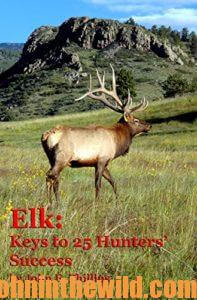 To learn more about hunting elk successfully, check out John E. Phillips’ book, “Elk: Keys to 25 Hunters’ Success,” available in Kindle, print and Audible versions at https://amzn.to/2IDszQk. You may have to copy and paste this click into your browser. (When you click on this book, notice on the left where Amazon allows you to read 10% of the book for free).
To learn more about hunting elk successfully, check out John E. Phillips’ book, “Elk: Keys to 25 Hunters’ Success,” available in Kindle, print and Audible versions at https://amzn.to/2IDszQk. You may have to copy and paste this click into your browser. (When you click on this book, notice on the left where Amazon allows you to read 10% of the book for free).

